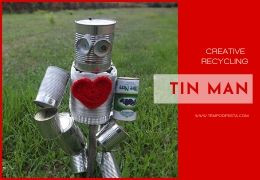First Communion is a special moment in every child's and family's life. In this article, we show you 5 simple and...
Blog categories
Search in blog
Latest posts
-
 5 Simple Touches for a Truly Special First Communion 29/04/2025Read more
5 Simple Touches for a Truly Special First Communion 29/04/2025Read more -
 An Oceania-Inspired Party for Giorgia’s 9th Birthday10/04/2025Posted in: Events657 views 0 LikedRead more
An Oceania-Inspired Party for Giorgia’s 9th Birthday10/04/2025Posted in: Events657 views 0 LikedRead moreIf your daughter loves Moana as much as Giorgia does, this birthday party will give you all the inspiration you need...
-
 St. Patrick’s Day: A Symbol of Luck and Prosperity Around the World14/03/2025Posted in: Curiosities1289 views 0 LikedRead more
St. Patrick’s Day: A Symbol of Luck and Prosperity Around the World14/03/2025Posted in: Curiosities1289 views 0 LikedRead moreSt. Patrick’s Day is not just an Irish holiday. It is a perfect opportunity to celebrate luck, prosperity, and...
-
 17 YEARS OF TEMPO DI FESTA – A JOURNEY OF PASSION, INNOVATION, AND A CELEBRATION REVOLUTION 13/02/202503/02/2025Posted in: Community1056 views 0 LikedRead more
17 YEARS OF TEMPO DI FESTA – A JOURNEY OF PASSION, INNOVATION, AND A CELEBRATION REVOLUTION 13/02/202503/02/2025Posted in: Community1056 views 0 LikedRead moreDiscover our incredible story: 17 years of innovation and passion that have transformed the way celebrations are done...
-
 Welcome February: The Month of Love, Celebrations, and Our 17th Anniversary 02/02/202521/01/2025Posted in: Community810 views 0 LikedRead more
Welcome February: The Month of Love, Celebrations, and Our 17th Anniversary 02/02/202521/01/2025Posted in: Community810 views 0 LikedRead moreFebruary is a special month at Tempo di Festa: we’re celebrating Valentine’s Day and our 17th anniversary. Take a...
Popular posts
-
 How to make a Little Donkey Piñata, Mexican Parties 2019/10/1814/10/2019Posted in: DIY projects27126 views 7 comments 0 LikedHow to make a Little Donkey Piñata, Mexican PartiesRead more
How to make a Little Donkey Piñata, Mexican Parties 2019/10/1814/10/2019Posted in: DIY projects27126 views 7 comments 0 LikedHow to make a Little Donkey Piñata, Mexican PartiesRead more -
 How to create cardboard paper Butterfly Wings 2015/02/201621/04/2020Posted in: DIY projects17259 views 0 LikedWe’ll make cardboard paper Butterfly Wings, a last minute idea for a carnival costumeRead more
How to create cardboard paper Butterfly Wings 2015/02/201621/04/2020Posted in: DIY projects17259 views 0 LikedWe’ll make cardboard paper Butterfly Wings, a last minute idea for a carnival costumeRead more -
 Customized party inspired by Spirit 07/31/201904/10/2019Posted in: Our party kits15217 views 2 comments 0 LikedCustomized party inspired by Spirit Stallion of the CimarronRead more
Customized party inspired by Spirit 07/31/201904/10/2019Posted in: Our party kits15217 views 2 comments 0 LikedCustomized party inspired by Spirit Stallion of the CimarronRead more -
 Masha and the Bear theme party 02/23/201830/09/2019Posted in: Community14050 views 0 LikedTo celebrate the 2nd birthday of her daughter, her mom organized a Masha and the Bear theme partyRead more
Masha and the Bear theme party 02/23/201830/09/2019Posted in: Community14050 views 0 LikedTo celebrate the 2nd birthday of her daughter, her mom organized a Masha and the Bear theme partyRead more -
 How to create the tin man 11/07/201728/09/2019Posted in: DIY projects13760 views 0 LikedHow to create the tin man from The Wizard of OZ using old tins, a very creative recyclingRead more
How to create the tin man 11/07/201728/09/2019Posted in: DIY projects13760 views 0 LikedHow to create the tin man from The Wizard of OZ using old tins, a very creative recyclingRead more


Latest comments